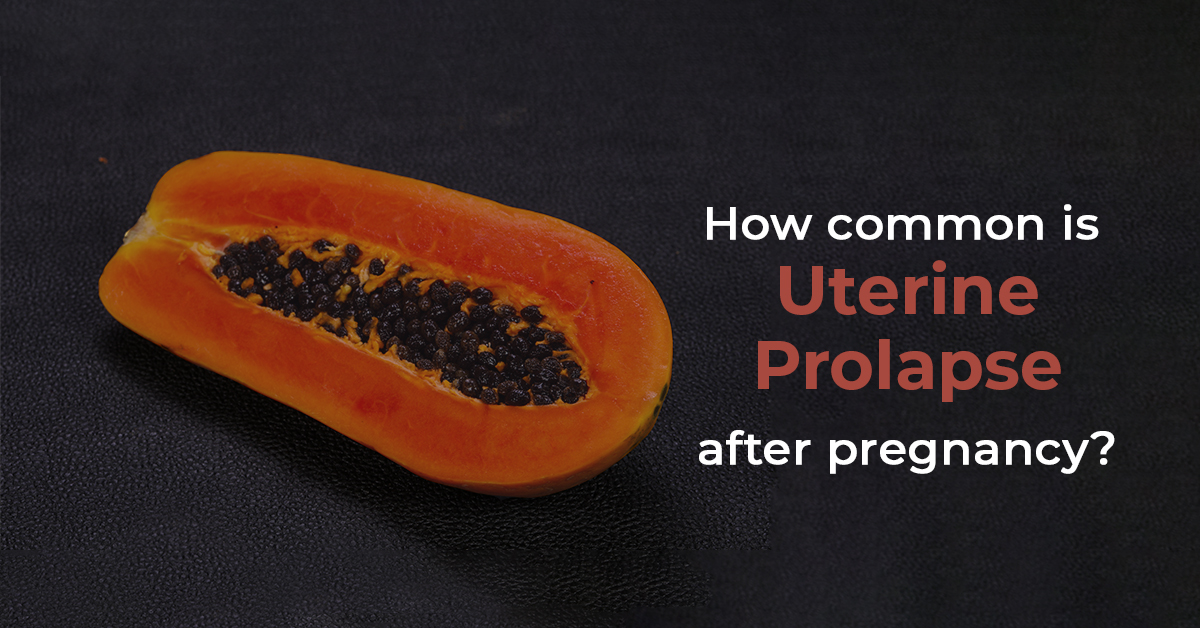Vidhita
25 May 2023

Childbirth is the most beautiful experience, but it can also have its fair share of complications, like a prolapsed uterus. This common condition can occur after childbirth and affects a lot of women. In this blog, we will discuss what a prolapsed uterus is, the symptoms, causes, and treatment options available.
A prolapsed uterus occurs when pelvic floor muscles and ligaments weaken and can no longer support the uterus. This causes the uterus to slip into the vaginal canal or protrude outside the vagina. The severity of a prolapsed uterus can vary from mild to severe, depending on how far the uterus has descended.
The symptoms of a prolapsed uterus vary depending on the severity of the condition. Mild cases may not cause symptoms, while severe cases can cause discomfort and pain. Some of the most common symptoms of a prolapsed uterus include the following:
Childbirth is among the most common causes of a prolapsed uterus, especially if the delivery is complex or the woman has had multiple pregnancies. Other factors that can contribute to the condition include:
Treatment for a Pregnancy-related uterine prolapse depends on the severity of the condition and the individual's symptoms. Mild cases may not require treatment, while severe cases may require surgery.
Some treatment options for a prolapsed uterus include:
However, if the Vaginal prolapse symptoms are severe, your gynecologist may suggest an appropriate line of treatment.
While it is not always possible to prevent a prolapsed uterus, there are some things that women can do to manage their risk of developing the condition.
These include:
Several therapy options are available for postpartum uterine prolapse. For example, weight loss, a high-fibre diet, not smoking, and Kegel exercises may help prevent this condition.
If you suspect having prolapsed uterus symptoms or are experiencing related symptoms, seeking medical attention from a gynecologist can provide you with an accurate diagnosis and the most suitable treatment options for your situation.
Remember, early detection and appropriate management can significantly improve your quality of life. For more information, tips, and expert suggestions, please follow Vidhita.
Vidhita

Vidhita29 May 2024
Unveiling the Role of Feminora Gel in Boosting Fertility
Embarking on the path to parenthood is an exciting and significant chapter for many couples. But conception, the very foundation of this journey, can be a complex biological process.

Vidhita29 Mar 2024
Steering a New Era of Women's Health Empowerment in the Digital Age
Hey superwomen! We see you - juggling a career, family, personal goals, and (hopefully) finding some time for yourself.

Vidhita29 Mar 2024
Silero: Revolutionizing Vaginal Health with Lactic Acid Film
The female body is a complex and interconnected system. Often, amidst the hustle and bustle of daily life, vaginal health can be ignored.

Vidhita29 Mar 2024
A Comprehensive Comparison of Feminora Gel and Other Intimate Lubricants
In the realm of intimate well-being, the market is flooded with a myriad of products aiming to address various concerns.